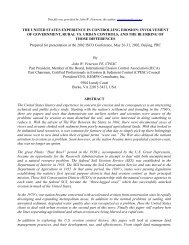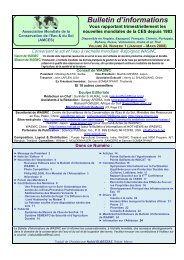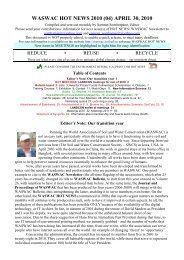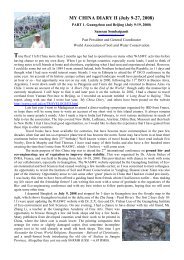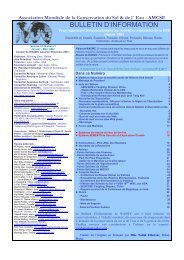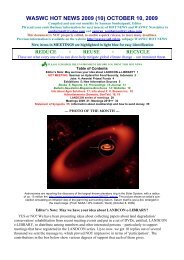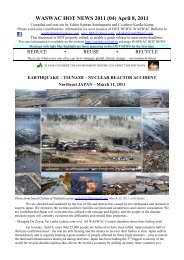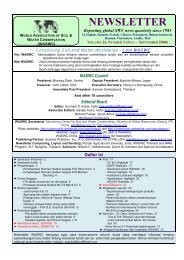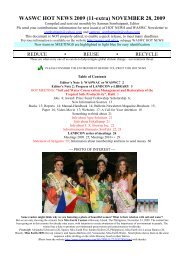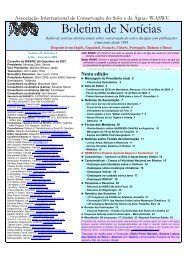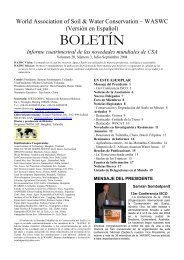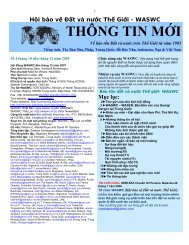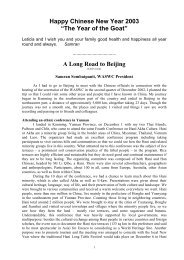Soils of the European Union - European Soil Portal - Europa
Soils of the European Union - European Soil Portal - Europa
Soils of the European Union - European Soil Portal - Europa
You also want an ePaper? Increase the reach of your titles
YUMPU automatically turns print PDFs into web optimized ePapers that Google loves.
a. in more than 50 percent <strong>of</strong> <strong>the</strong> soil mass; orb. in 100 percent <strong>of</strong> <strong>the</strong> soil mass below any surface horizon.Field identification. Iron and manganese (hydr)oxides in soils with gleyic properties are redistributed to <strong>the</strong> outside <strong>of</strong> <strong>the</strong>peas and towards <strong>the</strong> soil surface from where oxygen is derived. The resulting colour pattern (reddish, brownish oryellowish colours near <strong>the</strong> ped surface or in <strong>the</strong> upper part <strong>of</strong> <strong>the</strong> pr<strong>of</strong>ile, toge<strong>the</strong>r with grayish/bluish colours in <strong>the</strong> inside<strong>of</strong> <strong>the</strong> peas or deeper in <strong>the</strong> soil) indicates if gleyic conditions occur. Also, <strong>the</strong> dipyridyl test <strong>of</strong>ten gives a good indication ifferric iron is present in <strong>the</strong> soil solution.PermafrostDefinition. Permafrost is a layer in which <strong>the</strong> temperature is perennially at or below 0°C for at least two consecutive years.Secondary carbonatesGeneral description. The term secondary carbonates refers to translocated lime, s<strong>of</strong>t enough to be cut readily with a fingernail, precipitated in place from <strong>the</strong> soil solution ra<strong>the</strong>r than inherited from a soil parent material. As a diagnostic property itshould be present in significant quantities.Field identification. Secondary carbonates must have some relation to <strong>the</strong> soil structure or fabric. Secondary carbonateaccumulations may disrupt <strong>the</strong> fabric to form spheroidal aggregates or 'white eyes', that are s<strong>of</strong>t and powdery when dry, orlime may be present as s<strong>of</strong>t coatings in pores or on structural faces. If present as coatings, secondary carbonates cover 50percent or more <strong>of</strong> <strong>the</strong> structural faces and are thick enough to be visible when moist. If present as s<strong>of</strong>t nodules, <strong>the</strong>yoccupy 5 percent or more <strong>of</strong> <strong>the</strong> soil volume. Filaments (pseudomycelia), which come and go with changing moistureconditions, are not included in <strong>the</strong> definition <strong>of</strong> secondary carbonates.Stagnic propertiesGeneral description. <strong>Soil</strong> material has stagnic properties (from L. stagnare, to flood) if it is, at least temporarily, completelysaturated with surface water, unless drained, for a period long enough to allow reducing conditions to occur (this may rangefrom a few days in <strong>the</strong> tropics to a few weeks in o<strong>the</strong>r areas), and show a stagnic colour pattern 14 .Diagnostic criteria. Reducing conditions are evident by:1. a value <strong>of</strong> rH in <strong>the</strong> soil solution <strong>of</strong> 19 or less; or2. <strong>the</strong> presence <strong>of</strong> free Fe2 + as shown by <strong>the</strong> appearance <strong>of</strong> ei<strong>the</strong>r:a. a solid dark blue colour on a freshly broken surface <strong>of</strong> a field-wet soil sample, after spraying it with a 1%potassium ferric cyanide (K 3 Fe(III)(CN) 6 ) solution; orb. a strong red colour on a freshly broken surface <strong>of</strong> a field-wet soil sample after spraying it with a 0.2% a,a,dipyridyl solution in 10% acetic acid; and3. an albic horizon or a stagnic colour pattern ei<strong>the</strong>r:a. in more than 50 percent <strong>of</strong> <strong>the</strong> soil volume if <strong>the</strong> soil is undisturbed; orb. in 100 percent <strong>of</strong> <strong>the</strong> soil volume if <strong>the</strong> surface horizon is disturbed by ploughing.prevail due to iron sulphides. In calcareous material whitish colours are dominant due to calcite and/or siderite. Sands areusually light grey to white in colour and <strong>of</strong>ten also impoverished in iron and manganese. The upper part <strong>of</strong> areductomorphic horizon may show up to 5 percent rusty colours mainly around channels <strong>of</strong> burrowing animals or plantroots.14 A stagnic colour pattern shows mottling in such a way that <strong>the</strong> surfaces <strong>of</strong> <strong>the</strong> peas (or part <strong>of</strong> <strong>the</strong> soil matrix) are lighter(one Munsell value unit or more) and paler (one chrome unit or less) coloured, and <strong>the</strong> interior <strong>of</strong> <strong>the</strong> peas (or parts <strong>of</strong> <strong>the</strong>soil matrix) are more reddish (one hue unit or more) and brighter (one chrome unit or more) coloured than <strong>the</strong> nonredoximorphicparts <strong>of</strong> <strong>the</strong> layer, or <strong>of</strong> its mixed average. This mottling pattern may occur directly below <strong>the</strong> surfacehorizon or plough layer, or below an albic horizon.82




